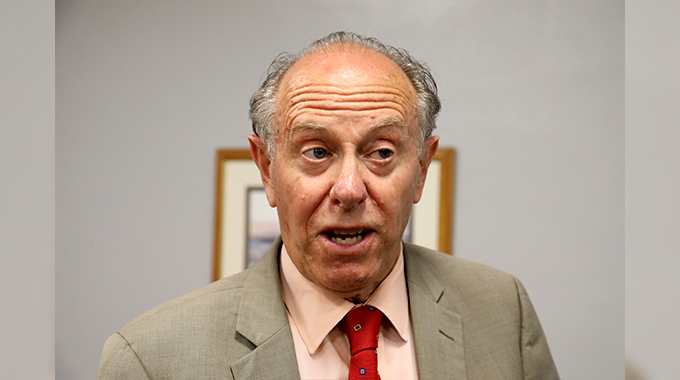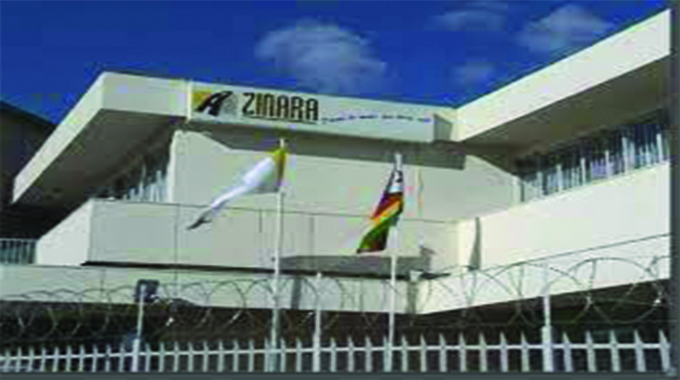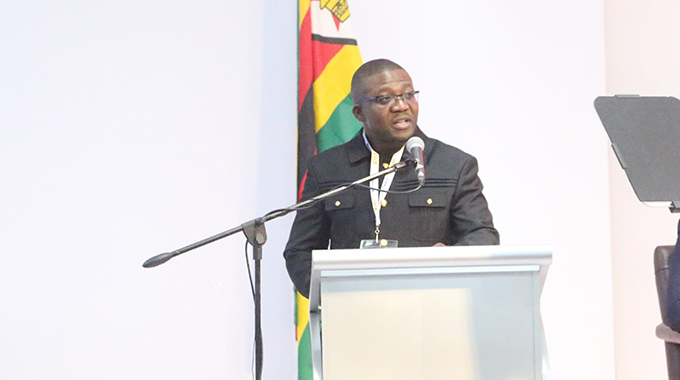Bulawayo fails to utilise Zinara funds

Sikhumbuzo Moyo, [email protected]
BULAWAYO City Council (BCC) failed to utilise $2,3 billion in road rehabilitation funds from the Zimbabwe National Road Administration (Zinara) yet the local authority is struggling to repair the city’s major roads, most of which are in a deplorable state.
Several roads in Bulawayo are riddled with potholes making them death traps. BCC has said most of its roads have outlived their lifespan and require US$700 million to rehabilitate them.
According to a Zinara funds disbursement report for 2023, which was released yesterday, the total budget for roads last year was $250 billion of which $218 billion was disbursed to road authorities which include the Department of Roads, the Rural Infrastructure Development Agency, urban and rural district councils.
Bulawayo was initially allocated $800 million before the budget was revised upwards to $4,8 billion.
However, BCC claimed about $2, 5 billion leaving an excess of over $2,3 billion.
This is not the first time that Bulawayo has failed to exhaust allocated road funds from Zinara.
Bulawayo mayor Councillor David Coltart yesterday confirmed that there is outstanding money from their Zinara allocation for 2023.
He said they made an application for the disbursement of the funds towards the end of last year, but it was not honoured.
“A total of $2 548 923 965 was disbursed and fully utilised by mid-December last year. The request for the remaining balance of $2 268 280 874 was made towards the end of the year, but it was not disbursed,” said Clr Coltart.
He attributed the local authority’s failure to utilise funds to a delay in the supplementary budget including the procurement process of materials from their suppliers.
Clr Coltart said their suppliers changed prices before delivering the materials forcing the local authority to restart the procurement process.
“The Zinara funds were received in local currency when most of the materials were in United States dollars. The uptake or response to tenders in local currency is very low resulting in delays in completing the procurement process,” he said.
“The continued devaluation of the local currency resulted in price increases of imported materials, and in some instances, we had to restart the procurement process to get a fair market value of the product concerned.”
In Matabeleland North, Zinara budgeted a total of $7,3 billion, and $5,1 billion was allocated to seven rural district councils, which, however, utilised almost half of the money, leaving $2,1 billion unclaimed.
For the three urban councils in the province, Victoria Falls City Council, Lupane Local Board, and Hwange Local Board claimed $1,3 billion out of an allocation of $2,1 billion.
Urban councils in Matabeleland South were allocated $6, 9 billion and managed to utilise $4,6 billion, while all the seven rural district councils claimed $3,1 billion out of the $4, 5 billion allocated to them.
In the Midlands Province, Zinara allocated $12 billion with rural district councils getting 5,1 billion while urban councils were allocated $6,9 billion. Out of the $12 billion allocated to councils in the province, $3 billion was not utilised.
In Masvingo Province, Zinara allocated $6,3 billion to both urban and rural district councils, and $4 billion was disbursed with the remaining $2 billion unclaimed.
In the statement, Zinara’s chief executive, Mr Nkosinathi Ncube said last year, they collected $868 billion.
The revenue mix comprised a 38 percent contribution from all 29 tolling points nationwide while licensing fees contributed 34 percent up from 30 percent in 2022.
“As Zinara, we remain committed to effectively discharge our mandate as a road fund manager for road infrastructure maintenance. Our core mandate is scoped around the maintenance of gazetted roads and not the construction of new roads and road infrastructure,” he said.
Mr Ncube, said licensing revenue grew in 2023 owing to various initiatives introduced by Zinara to improve access to licensing services.
Zimbabwe has over 1,2 million registered vehicles of which 60 percent are regular in terms of licensing compliance. On average, between 135 000 and 150 000 vehicles were licensed monthly in 2023.
Last year, Zinara funded several key economic projects that have helped to transform people’s lives in different parts of the country. Some of these projects include the Somgolo Bridge which is 178 metres long and was repaired for $15,5 billion.
“The completion of this project has enabled improved access to critical services and markets. The bridge connects Tsholotsho and Lupane districts,” said Mr Ncube.
“Another key project was the rehabilitation of the 10km stretch on the Binga-Siakobvu road at a cost of $353 billion and it connects three provinces namely Matabeleland North, Midlands, and Mashonaland West. The road cuts the current Harare-Binga route by 300kms.”
The Government is committed to rehabilitating the road network as infrastructural development is key to attaining an upper middle-income economy by 2030. Most of the country’s roads have outlived their lifespan and the rains that were received during the last rainy season worsened their condition.
Funds have also been released for the rehabilitation of the Beitbridge-Bulawayo-Victoria Falls Road. The massive rehabilitation works started following intervention by President Mnangagwa in response to an outcry by motoring public and business leaders.
The highway is a strategic trade route in the regional North-to-South corridor, linking Zimbabwe with South Africa, Zambia, Botswana, Namibia as well as DRC.












Comments